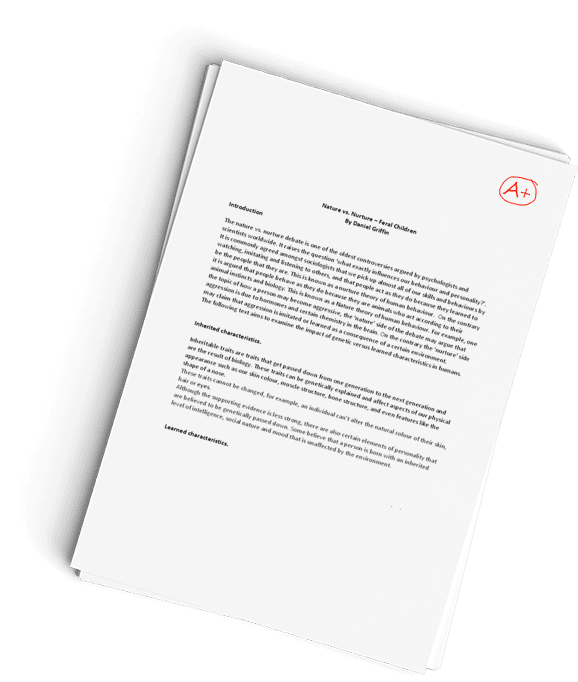responses for week 1
Question Description
I have 2 of my classmate discussions and I need someone to response to each post with 150-200 words
Ch1. Kate F
Definitions of risk
Foremost, it is essential to define the risk term, which is the standard of any condition expected to bring detriments, instability, or severe consequences to any organization or community. As Mr. Hopkins cited in the chapter, the definition of risk is as follows: ‘a chance or possibility of danger, loss, injury or other adverse consequences’, and the definition of at-risk is ‘exposed to danger’. In this context, risk is used to signify negative consequences. In contrast, under very particular circumstances, taking the risk resulted in a significant accomplishment that may be linked to several sacrifices. For instance, when a professional employee makes a major decision to hit another opportunity and took it upon himself to leave the very stable position in the organization, that makes the decision marked as a risk because his professional life is in a dangerous zone, with no expectation of what will happen in the new opportunity. Risk is the combination of the probability of an event and its consequence. Consequences can range from positive to negative (IRM). However, there are many definitions of risk, but all associated with jeopardies in definite unexpected events and the consequences either positive or negative. In my perspective, the risk is when the consequences emerged due to any unpredicted action, and that action is severely aggressive and harmful. Besides, the meaning of the risk fluctuates depending on the purposes of using the risk term, but it has the nature of the danger.
Ch2
Risk and reward
Each organization has the sense to have achievement and strive to garner all aims that have been placed in its extended or successful short-term agendas. Risk is one of the unwelcome party of the desired project. Conversely, risk can be the only way of accomplishment; if so, the risk management unit must confront that by understanding the risk and be prepared for it. Besides, the rewards’ value must be worth running toward the risk and speculating more satisfaction and prosperity. When an organization puts the value at risk in this way, it should do so with the full knowledge of the risk exposure and it should be satisfied that the risk exposure is within the appetite of the organization. Even more important, it should ensure that it has sufficient resources to cover the risk exposure (Hopkin, 2017). At this point, the risk must be adequately identified by the organization’s risk management discipline and implementing suitable strategies using the available capabilities such as workforce and fiscal resources. Before confronting the risk, the more rewards and benefits must be presented, or in worst cases, sizing the losses down is accepted. For opportunity risks, the risk versus reward analysis should result in fewer unsuccessful new products and a higher level of profit or (at worst) a lower level of loss for all new activities or new products (Hopkin, 2017).
Ch3
Manage uncertainty risks
Undoubtedly, uncertainty risk is present in any new venture expected to be launched to the public. So, the organization is committed and prepared for any unpredicted disruption. Providing funds power with a plan to avoid, mitigate, transfer the risk to a lower level, and then accept the risk is a mandatory mediation. Uncertainty or control risks are an inevitable part of undertaking a project. A contingency fund to allow for the unexpected will need to be part of a project budget, as well as contingent time built into project schedules (Hopkin, 2017).
Reference
Hopkin, P. (2017). Fundamentals of risk management: Understanding, evaluating and implementing effective risk management
Chapter 1 Jack S
Types of risks
Risks are a choice of action taken that can have a negative or a positive outlook at the end or sometimes result in uncertainty. Risk is typically directly linked to opportunity, loss, or unpredictability. There are different types of risks, and each kind of risk has its characteristics, which eventually play a huge part in determining the type of management employed.
Opportunity risks are those risks that one takes to achieve a positive effect. The type of bet is interesting because it helps in knowing and classifying the kinds of bets one can come across in their organizations or individualistically and understand how you can navigate through them and come out with a successful output. Risk offers the foundation on which one can base their risk management strategies. Without understanding the kinds of risks, one is dealing with, and there can be no practical way of handling and managing them; hence one needs to understand every type of risk they are facing. After identifying the risks, it is easier for one to know and pick the best strategies for handling the risk and these strategies include avoidance, reduction, sharing, and retention (Hopkin 2017). The plan that will be selected is dependent on the risk involved in a particular situation, and one will choose a necessary one, consequently.
Chapter 2
Attitude to risks
Attitude to risks refers to a perception that an organization holds regarding taking risks to impact the targets. Different persons and or organizations might be considered either risk-averse or risk aggressively. The attitude one has towards risk is highly dependent on the section of the market, the nature of the market, and the level of growth of the marketplace. Attitude to risks applies to our everyday lives in the choices we have to make that have a stake or many risks associated with it. An individual or organization’s perspective on the risks to be taken will eventually define the kind of outcome it has in the end. The initial impression on attitude to risk management risks is that the attitude one holds towards risks will ultimately determine the direction of risk for an organization (Hopkin 2017). Understanding why one has a particular attitude towards risk will make the risk management process more comfortable and help avoid conflicts.
Chapter 3
Embracing Opportunity Risks
When reading Hopkins chapter 3, there is the discussion of embracing opportunity risks, which is all about an organization or an individual choosing to take a calculated business risk to get a positive outcome out of it. Opportunity risks bring about the potential to achieve the organizational or the individual’s goals. Opportunity risks are known to many as the type of risk that can ensure (although they can also inhibit) the corporation (Hopkin 2017. Embracing opportunity risks also gives the impression that it’s directly linked with opportunity management. It helps individuals or organizations acquire an approach that fully utilizes the advantages of taking a business risk. Every organization has to decide how eager they are to jump on an opportunity risk, where risk management comes into play. Risk management offers to analyze which chances are worth taking and those that aren’t worth it. Opportunity management can be termed as a viewpoint used to enhance the advantages of taking up business stakes (Hopkin, 2017). The inclination is to make the best of the prospects of a recognizable positive impact made from investments in business opportunities.
References
Hopkin, P. (2017). Fundamentals of risk management: Understanding, evaluating, and implementing effective risk management. London, NY, NY: Kogan Page..
Have a similar assignment? "Place an order for your assignment and have exceptional work written by our team of experts, guaranteeing you A results."








